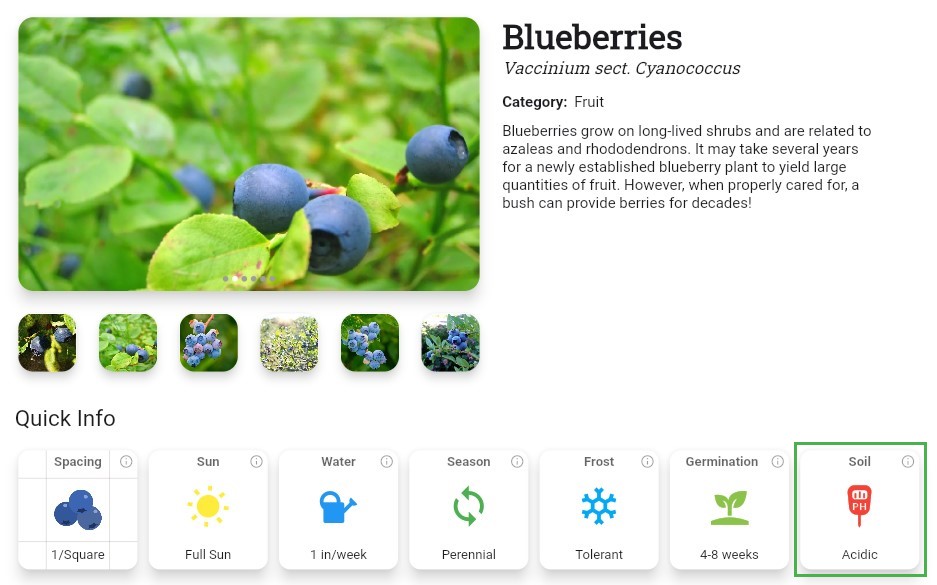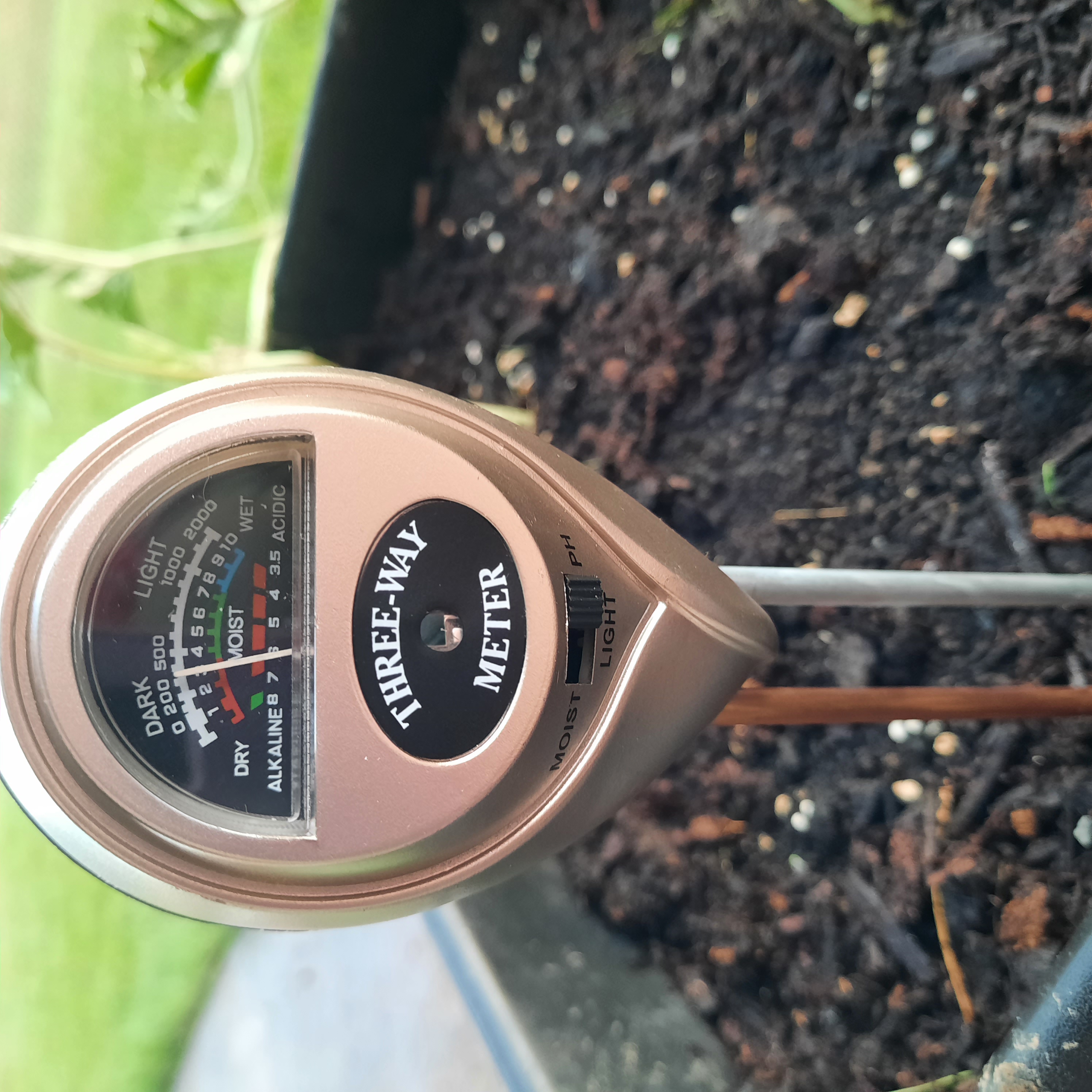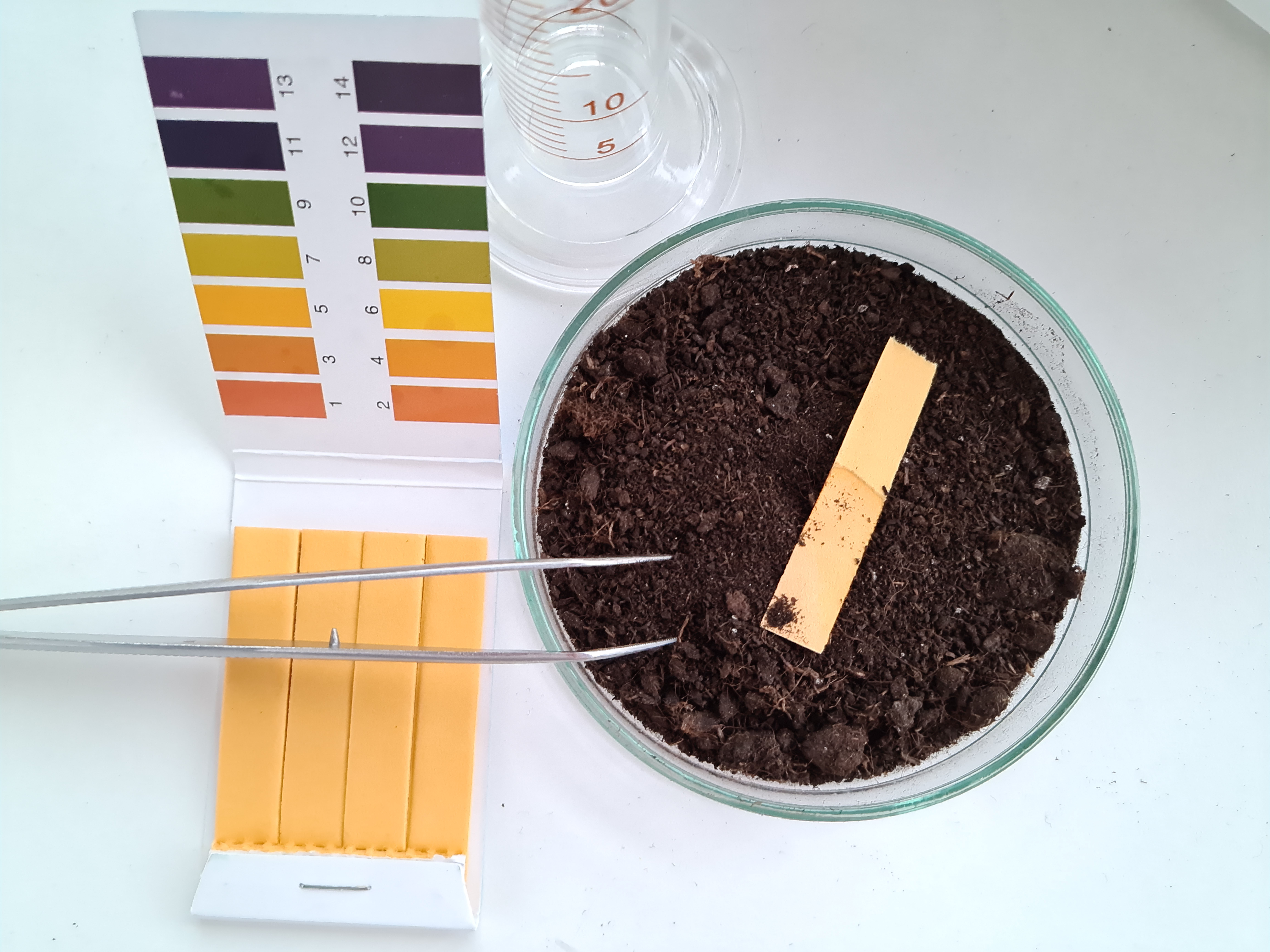There’s a few obvious things that plants need to thrive- soil (or a growing medium at least), sunlight, water, and nutrients. What might not be as obvious is the importance of soil pH for healthy plants. If your soil doesn’t have the proper pH for the plants that you’re growing, you’ll need to amend it so your garden can thrive. But before using any amendments to change your soil pH it’s important to have an understanding of what soil pH is and why it matters for your plants.
What is soil pH and why does it matter?
pH stands for potential hydrogen, and in the garden it is a measurement of the amount of hydrogen ions in the soil (technically in a soil solution). pH is measured by a numerical scale ranging from 0.0 to 14.0 although soil pH will never reach the extreme ends of the scale. Lower numbers are acidic, higher numbers are alkaline (aka ‘basic’), and a pH of 7.0 is neutral- neither acidic nor alkaline. It’s a bit counter-intuitive, but the higher the pH the less hydrogen there is in the soil and the lower the pH the more hydrogen. The pH of the soil affects the availability of nutrients for your plants, so it’s important to have right soil pH for the plants you grow. If the soil pH is either too acidic or too alkaline, nutrients will be bound too tightly or too loosely for plants to use.
What pH should my soil be? (*hint, check Planter!)
As a rough guideline, the optimal soil pH for growing fruits and vegetables is generally between 6.0 - 7.0. To confirm the preferred pH range for each of the plants that you grow, check out the new Soil pH Quick Info Card in Planter!

While many plants can tolerate a somewhat wide pH range, they do have individual preferences and there are a some plants with very particular pH needs.
How can I test my soil pH?
The best way to test your soil pH is to send a soil sample to your local extension office or to a reputable soil testing lab. You’ll likely want to test multiple areas in your garden as the pH can vary from bed to bed; be sure to keep track of your samples and follow the lab’s soil sampling instructions carefully for accurate results. While lab tests can be somewhat pricey, you’ll learn lots of valuable information about your soil and how to best to amend it. Check your local extension office first as many offer this service for free or at a reduced cost.
Another option is to buy a soil pH meter or a home soil test kit. There are even ways to do DIY soil pH tests with materials you might already have at home. While at-home home testing isn’t as precise as lab testing, if the test is done properly you should at least get an indication of whether you have highly acidic or alkaline soil that could cause your plants to struggle. If the at-home test suggests there could be a problem with your soil pH, you’ll want to follow up with a lab test before using any pH-altering amendments. A lab test will help you determine the right amendment application rates for your soil.

Changing your soil pH
How to raise soil pH
If you only need to raise your soil pH slightly, applying compost can help to bring the pH into an optimal range. Compost has an ideal pH for growing veggies and by working it into your soil it can help to buffer your soil pH. If your soil is fairly acidic and you need to raise the pH significantly, you’ll want to apply lime to the soil. There are different types of lime available - garden lime (aka agricultural lime) is calcium carbonate which will add calcium to the soil along with raising the pH. Dolomitic lime, another common product for raising soil pH, will also add magnesium. If you know your soil is deficient in magnesium you may want to use dolomitic lime.
It typically takes some time for soil microbes to break down the lime and raise the soil pH, so you’ll want to apply lime in the fall for the soil to be ready for spring planting.
How to lower soil pH
If your soil is only slightly alkaline, incorporating compost can also help to buffer the alkalinity. To acidify your soil significantly, you’ll need to apply a sulfur or sulfate product. Generally in the home garden it’s best to use elemental sulfur (sometimes called agricultural sulfur). It will take time for the sulfur to acidify the soil so it’s ideal to apply it in fall for spring planting. Some sources also suggest using peat moss to lower soil pH however according to the Iowa State University Extension Office only Canadian sphagnum peat moss can effectively lower soil pH (and it’s best used in a contained space in conjunction with sulfur for acid-loving plants).
Keep in mind that changing your soil pH generally isn’t a one-time event; you’ll need to continue monitoring the pH and adding amendments as necessary to maintain the recommended range. If you’re struggling to change your soil pH, gardening in raised beds or containers could be a good alternative as it’s easier to achieve and maintain the right pH in a contained spot. Container growing is also a good option for plants with unique pH needs, such as blueberries, which require an unusually acidic soil that most other plants won’t appreciate.
While soil pH usually isn’t top of mind in the garden, it’s one of the most important factors for healthy plants. Whether you’re starting a brand-new garden or improving existing garden beds, be sure to pay attention to your soil pH so your plants can flourish!
